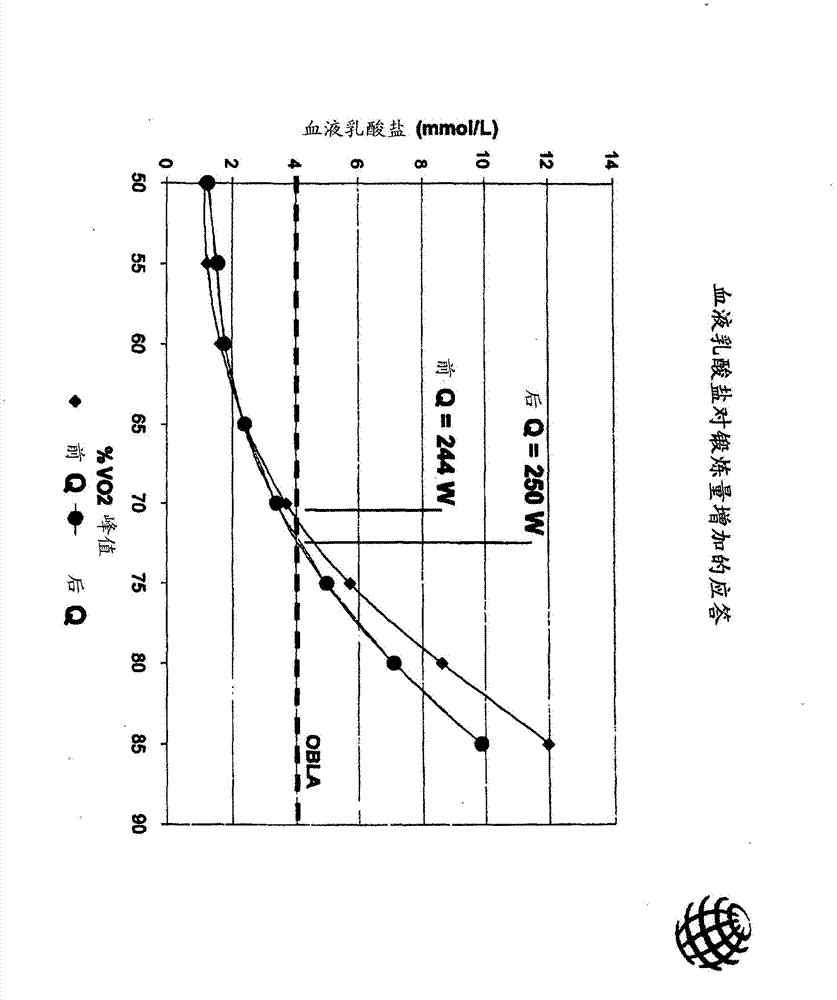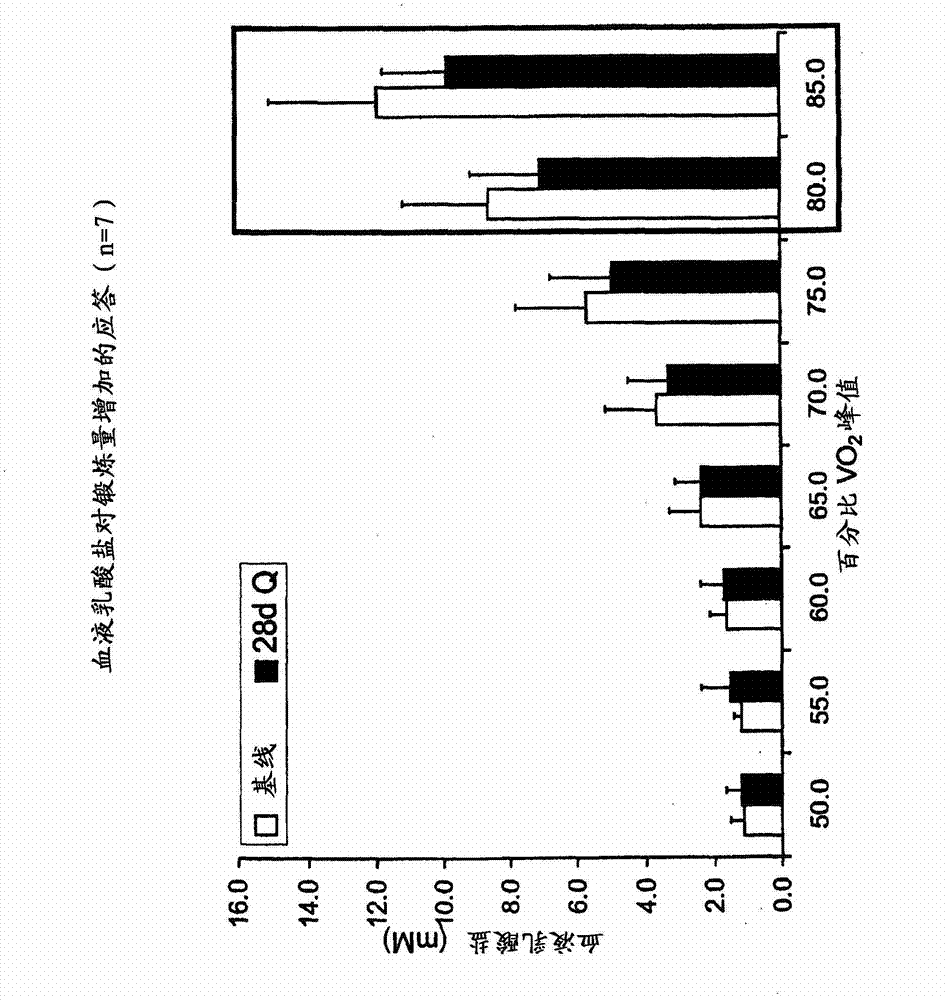Methods of reducing blood lactate concentration
A technology of lactate and concentration, which is applied in the direction of pharmaceutical formula, dispersion liquid delivery, medical preparations containing active ingredients, etc., to achieve the effect of reducing accumulation
- Summary
- Abstract
- Description
- Claims
- Application Information
AI Technical Summary
Problems solved by technology
Method used
Image
Examples
Embodiment 1
[0082] Myocyte Assay for Identifying Compounds that Reduce Lactate Concentrations
[0083] Mouse C2C12 myoblasts were purchased from the American Type Culture Collection (ATCC; Manassas, VA) and grown to 90% in high glucose Dubecco's Modified Eagle Medium (DMEM) containing 10% fetal bovine serum (FBS). Fusion. Myoblasts from purchased batches were grown in T75 flasks and subcultured >5 times, then plated on collagen-coated six-well plates for experiments. To induce myotube differentiation, the FBS-containing matrix was replaced with a matrix containing 2% horse serum or a serum-free matrix and cultured for 5-7 days. Myocytes were cultured and incubated at 37°C, 5% CO with or without antibiotics 2 Maintain myotubes in an incubator.
[0084] Electrical pulses were applied to the myotubes using the C-Pace EP Cell Culture Stimulator (IonOptix; Milton, MA). Cells were stimulated to produce visible and repeatable contractions at a pulse frequency of 0.5 Hz and a pulse duration o...
Embodiment 2
[0086] Myocyte assay with quercetin
[0087] For incubation experiments, pre-treat differentiated myotubes with quercetin and / or other compounds. Approximately 18 hours before electrical pulse stimulation and immediately prior to electrical pulse stimulation, DMEM or serum-free medium containing 2% horse serum was replaced with the same medium containing various concentrations of quercetin or other test compounds. The samples from resting and contraction (incubated with and without compound) were analyzed using the modified method of Lowry and Passonneau (A Flexible System of Enzymatic Analysis, pages 194-199, Academic Press, INC. 1972, which is incorporated herein by reference in its entirety). Cell matrix samples were subjected to enzymatic assays to test for lactate.
Embodiment 3
[0089] Screening of Candidate Compounds for Reducing Lactate Concentrations
[0090] Candidate compounds are screened for their ability to reduce the concentration of lactate in the stroma from contractile cells relative to cells supplemented with quercetin and / or relative to cells exposed to one or more other candidate compounds. Differentiated myotubes are pretreated with the candidate compound, preferably in water-soluble form. The DMEM or serum-free medium containing 2% horse serum is replaced with the same medium containing the candidate compound at a concentration of about 0.001 mM to about 10 mM about 18 hours before and immediately before electrical pulse stimulation.
[0091] Differentiated myotubes are stimulated with electrical pulses to produce visible repetitive contractions of the cells. A pulse frequency of 0.5 Hz and a duration of 24 ms for 90 minutes was used. The lactate concentration in the cell culture medium is determined and compared to a control experi...
PUM
 Login to View More
Login to View More Abstract
Description
Claims
Application Information
 Login to View More
Login to View More - R&D
- Intellectual Property
- Life Sciences
- Materials
- Tech Scout
- Unparalleled Data Quality
- Higher Quality Content
- 60% Fewer Hallucinations
Browse by: Latest US Patents, China's latest patents, Technical Efficacy Thesaurus, Application Domain, Technology Topic, Popular Technical Reports.
© 2025 PatSnap. All rights reserved.Legal|Privacy policy|Modern Slavery Act Transparency Statement|Sitemap|About US| Contact US: help@patsnap.com



